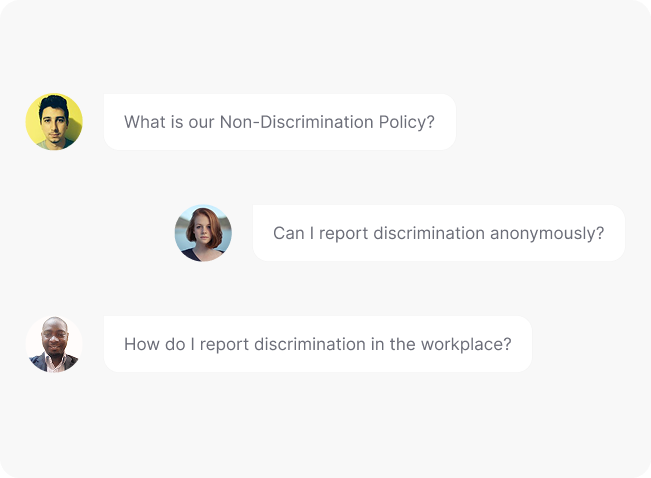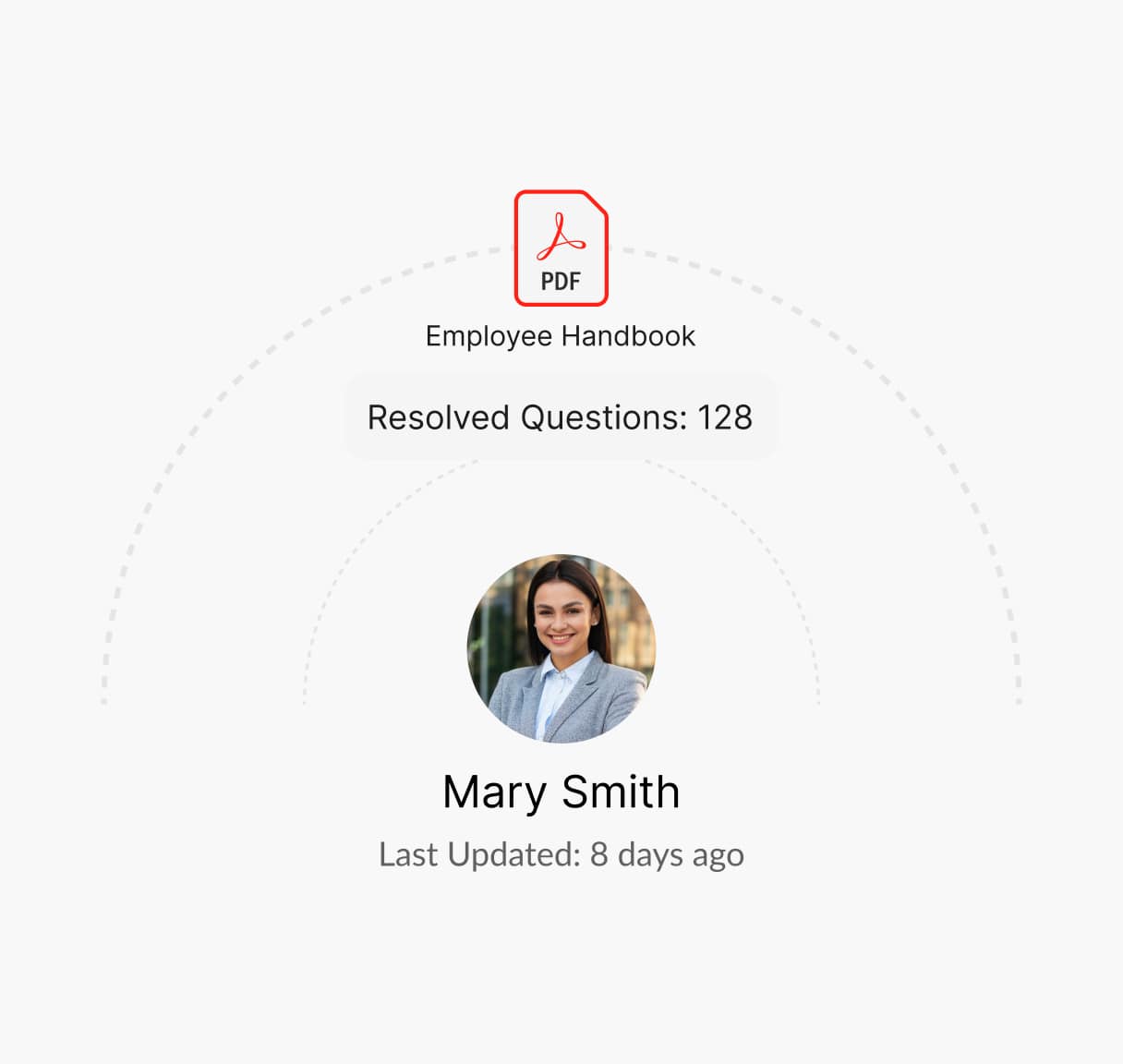Everything You Need to Know About Non-Discrimination Policy
A non-discrimination policy is the cornerstone for fostering diversity, equity, and inclusion in the workplace. It establishes an organization’s commitment to providing equal opportunities and preventing discrimination based on protected characteristics.

What is a Non-Discrimination Policy?
A non-discrimination policy outlines an organization’s commitment to treating all employees, applicants, and stakeholders equally, regardless of characteristics such as race, color, religion, gender, age, disability, sexual orientation, or national origin. This policy defines prohibited discriminatory practices, sets out reporting and resolution procedures, and underscores the organization’s dedication to a fair and respectful workplace.
Guidelines for Creating a Non-Discrimination Policy
When crafting a non-discrimination policy, it’s essential to focus on legal compliance, inclusivity, and operational effectiveness. Follow these steps to create a policy that’s both comprehensive and actionable:
Conduct a Policy Audit
Review existing policies to identify gaps and ensure alignment with relevant anti-discrimination laws at local, state, and federal levels.
Engage Key Stakeholders
Collaborate with all HR Managers, legal advisors, and employee representatives to ensure the policy is inclusive, accurate, and reflective of organizational values.
Simplify Language and Ensure Accessibility
Use clear, straightforward language to make the policy easily understandable. Ensure the document is readily available and accessible to all employees, especially through digital channels.
Provide Clear Examples of Discrimination
Include real-world scenarios that demonstrate both acceptable and unacceptable behaviors. This helps employees understand the policy’s application in everyday situations.
Integrate the Policy into Onboarding
Make the policy an integral part of your onboarding process, ensuring all new hires understand their rights and responsibilities from the start.
Establish a Review Cycle
Regularly review and update the policy to reflect changes in laws, organizational practices, or feedback from employees, ensuring it remains relevant and effective.
What is Covered in a Non-Discrimination Policy?
An effective Non-Discrimination Policy should include the following
Clearly define discrimination
Add examples of direct, indirect, and systemic discrimination, to provide clarity on what is considered unacceptable.
Protected Characteristics
List all characteristics protected under the policy, such as race, gender, religion, disability, and sexual orientation, in accordance with local, state, and federal laws.
Prohibited Behaviors
Specify discriminatory actions such as harassment, biased hiring practices, wage discrimination, or unequal treatment in promotions, benefits, and assignments.
Reporting Mechanisms
Detail how employees can report discrimination, including options for anonymous reporting to protect the reporter’s privacy and safety.
Investigation and Resolution Process
Outline the steps taken when a complaint is filed, ensuring a fair and confidential investigation process, with clear timelines for resolution.
Confidentiality Assurance
Assure employees that all reports and investigations will be handled confidentially, with the utmost care to protect the identities and privacy of involved parties.
Compliance with Laws
Ensure the policy aligns with applicable anti-discrimination laws at the local, state, and federal levels to minimize legal risks.
Anti-Retaliation Protections
Reinforce that employees who report discrimination or participate in investigations are protected from any form of retaliation, ensuring they can come forward without fear of negative consequences.
Training and Education Programs
Emphasize the requirement for regular training for all employees, managers, and HR personnel to ensure they understand and can apply the principles of non-discrimination.
Need help creating a Non-Discrimination Policy?
How Winslow Helps HR Teams Manage Non-Discrimination Policies Effectively
Winslow, your AI-powered HR assistant, simplifies the implementation and enforcement of your workplace harassment policy by providing real-time access and support:

Instant answers anytime
Winslow enables employees to access the non-discrimination policy at any time through channels like Slack, Teams, or email, ensuring they always have the information they need.
Personalized Support
Winslow delivers instant, AI-powered answers to all HR questions, including those about your Non-Discrimination Policy, ensuring a fair and inclusive workplace for everyone.


Analytics and Insights
Winslow tracks policy-related queries, helping you identify trends and areas where your policy might need improvement.
Resolve Sensitive Issues Faster with Winslow
Ensure that discriminatory practices are addressed promptly and effectively. Empower your team to manage sensitive inquiries more efficiently, providing faster, more effective responses with Winslow’s AI assistance.
Frequently asked questions
Have further questions about Winslow, contact us at sales@usewinslow.com
What types of behaviors are considered discriminatory?
Discriminatory behaviors include actions such as denying opportunities or benefits, making offensive remarks, or implementing policies that disadvantage certain individuals or groups based on their protected characteristics.
How can employees report discrimination anonymously?
Many organizations offer anonymous reporting mechanisms, such as digital portals or hotlines, which ensure employees can report concerns safely and confidentially.
What steps does the organization take after a complaint is filed?
Once a complaint is filed, the organization conducts a thorough, impartial investigation, keeping the process confidential and ensuring a fair and timely resolution.
Are employees protected from retaliation after filing a complaint?
Yes, employees who report discrimination or participate in investigations are protected from retaliation, as stipulated by both the policy and anti-discrimination laws.
How often should non-discrimination training be conducted?
Non-discrimination training should be provided at least annually, or more frequently if there are significant updates to the policy or relevant laws. Regular sessions ensure ongoing awareness and compliance.
Additional resources
Device Usage Policy
Managing employee leave effectively is vital for maintaining workforce productivity and compliance....
Learn moreconfidentiality policy
Protecting sensitive information is crucial. A clear Confidentiality Policy outlines guidelines for...
Learn moreclaim reimbursement
Ensuring fair compensation for expenses is key. A clear Claim Reimbursement Policy...
Learn more




